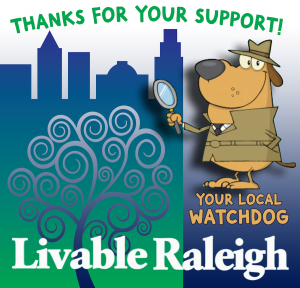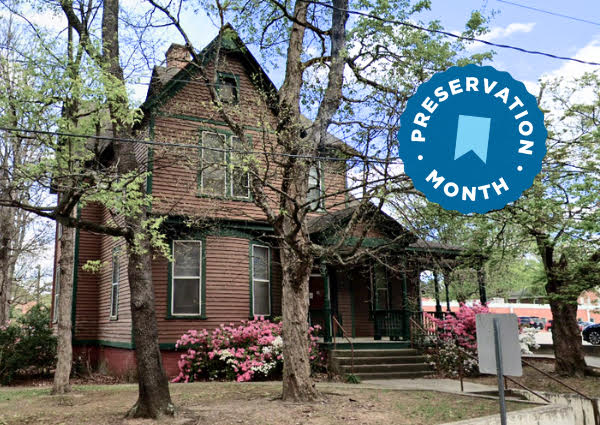
Chris Crew was born in Morganton, NC and moved to Raleigh in 1964. He’s been a resident of Historic Oakwood since 1975.
Educated at NCSU and UNC-Chapel Hill, works for the State of NC in Public Safety. Preservationist, Cook, Trombonist, Brewer, Choirboy, Grandfather.
Chris spoke at City Council on June 11, 2024.
Section J of the 2030 Comprehensive Plan for the City of Raleigh addresses Historic Preservation and states:
-
- Only 6% of housing pre-dates 1950
- Raleigh has the opportunity to distinguish itself from other large cities through careful preservation of its historic core.
- Disparity between building size and zoning envelope: The size of existing buildings are frequently substantially smaller than the current zoning classification’s permitted building envelope which puts substantial pressure on historic resources. (Recent land value hikes exacerbate this condition.)
Raleigh’s system of Historic District Overlays helps to mitigate this risk to our cultural heritage.
You will soon be asked to vote on two significant zoning change requests.
Of special interest as we approach Juneteenth, Z-72-22 involves 423 S. Blount Street in the Prince Hall Historic District. This lot is adjacent to the eponymous Masonic Temple and is currently zoned DX-3 with a General Historic District overlay.
This designation was made with considerable stakeholder input 11 years ago and is intended to protect the special character of Raleigh’s original African American residential and commercial district.
When purchased by the petitioner in May of 2022, the lot had been encumbered by the HOD-G designation for a decade, and by conditions set forth in the UDO since 2016. These constraints should not come as a surprise to a real estate speculator.
In principle, zoning variances should only be allowed when zoning constraints were improperly applied. There was nothing improper in the creation and establishment of either the HOD or the UDO—both were enacted by public consent.
The HOD should not be compromised for the financial gain of an LLC, or to mitigate the impact of a flawed business plan.
After an exhaustive review, the RHDC rejected the COA application for a 12-story building on the site as it was deemed not congruent in form, mass, size and orientation with nearby well-related structures in the defined Historic District.
Failure to support the decision of the duly appointed commission by allowing piecemeal dissolution of the HOD jeopardizes ALL historic designations in the city, all of which are based on stakeholder consensus rather than caprice. You’ll hear more about other issues with the proposal from a variety of stakeholders when it comes before you for consideration next month with a recommendation for denial by the Planning Commission.
Z-01-24, a proposed assemblage of lots on Wake Forest Road seeks removal of a Neighborhood Conservation Overlay District adjacent to both the Mordecai Historic District and Historic Oakwood—two of Raleigh’s oldest intact neighborhoods. This proposal will result in the demolition of three structures eligible for listing on the National Register of Historic Places, to be replaced by a 50’ tall structures that will impact not only the traffic on an already busy street, but also will impact the viewshed of two historic districts and will have unknown impacts on water and sewer utilities. Three buildings with multiple opportunities for affordable housing will be lost with NO concessions to new affordable housing.
Again, this request does not correct an improper zoning decision, it just creates additional privileges for investors with a flawed plan at public expense. You’ll receive details from stakeholders when this comes before you again at the public hearing next week.
Various Preservation organizations have been trying to get the State Property Office to work with them on preservation opportunities along Blount Street—Raleigh’s original grand boulevard. Among these opportunities are the transfer of certain mostly vacant surface parking lots to ownership by non-profits to serve as relocation sites for any number of buildings of considerable historical significance that are doomed by previously granted zoning changes.
In 2020, the State Property Office accepted an offer from a private citizen for the historic property at 412 North Wilmington Street. This building was purchased by the state in 1979 and has been unused since 2008. The sale includes the lot at 423 N. Blount St for relocation. For some reason, the State has failed to close the sale and transfer title so that a missing tooth in the smile of Blount Street can be repaired. Councilman Branch, this is in your district.
Council Members, Madam Mayor, this is in the heart of your Capital City. PLEASE use your influence to encourage the State Properties Office to complete the sale and support preservation of our historic resources. I’ve emailed details and contact information to each of you.
Thank you for your thoughtful service. I’ll be back next month to bring you a message about eight historic places in peril.
If you appreciate the kind of reporting we bring to you
|
Please donate $10 or $20, Thanks for supporting |
 |

